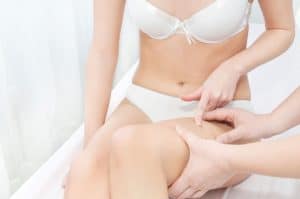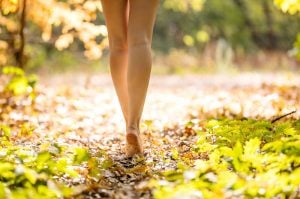- A Succinct Overview of the Treatment for Varicose Veins
The presence of varicose veins is a common medical condition when the veins under the skin bulge and develop a rope-like appearance. Varicose veins most often occur in the legs. The condition can occasionally cause discomfort and/or painful aches. Over the next few minutes we will take a look at the causes behind the development of varicose, underlying health factors, and several different treatment options that are currently available to sufferers of varicose veins.
What are varicose veins?
Varicose veins are easily identified by the naked eye. The bulging, purple or blue veins can be seen just under the skin. Most varicose veins occur in the lower extremities and legs. Varicose veins are the result of an irregular reverse flow of blood in the veins.
Our veins have small valves that control the flow of blood by keeping it all flowing in the proper direction back towards your heart. In the cases where varicose veins exist, those valves have become weak or damaged. Without properly functioning blood valves, the blood may start to flow backwards. This causes localized swelling and irreversible vein damage.
Varicose veins can lead to some serious health problems. Among them are: blood clots (thrombosis) and slow or non-healing sores (venous stasis ulcers). Varicose veins may also be a sign that you are at a increased risk of developing other disorders of the circulatory system.
What Are Risk Factors Of Varicose Veins?
There are several risk factors of varicose veins that can make this disease is more likely to affect you, some of these factors include:
1. Heredity
Yes, varicose veins can be genetic, which means if your parents or grandparents have suffered from this problem then you may as well!
This can be so problematic since genetic diseases often come back which may make you feel the treatment is useless.
However, there are many preventive tips and treatments that can help to stop varicose veins from arising.
2. Injuries
Some injuries and trauma that damage your veins may cause varicose veins.
If your veins are damaged then they may not be able to supply blood properly and blood pooling can occur which results in varicose veins.
3. Gender
Unfortunately, if you are a woman then we have got bad news for you since varicose veins are more likely to affect women than men.
It’s because the hormonal imbalances during periods and puberty can trigger problems in veins which causes varicose veins.
4. Older age
As we get older our veins get weaker and can’t function like before which makes it a good environment for varicose veins to arise.
So if you are 40 or older then varicose veins are more likely to appear in your life.
But this can be avoided by regular exercise and improved blood circulation.
5. Obesity Or Pregnancy
Excess the amount of weight in your body puts a lot of pressure on the legs which makes it really hard for your veins to pump blood black to the heart and this increases cases of varicose veins in obese people.
If want to avoid such a problem then make sure you start working on decreasing your weight.
Furthermore, pregnancy is also a type of weight gain and hormonal imbalances make the vein problem worse.
But you don’t have to worry since once you deliver your baby the venous diseases will stop showing up.
What are your treatment options?
There are currently several effective, non-invasive treatments for varicose veins. These include some changes in lifestyle and some non-invasive medical procedures.
Lifestyle changes
Varicose veins and their associated discomfort and pain can be alleviated by:
- participating in a weight loss program,
- making sure to follow a balanced diet and
- engaging in regular activity and/or exercise.
If you sit for prolonged periods of time due to work or for other reasons, you should take activity breaks. This will help improve your blood circulation.
Compression stockings and other garments are a simple first step for treating varicose veins. Compression clothing functions by supporting your deteriorated veins while boosting circulation. Support socks or support hosary provide mild compression to the area. Compression stockings offer stronger support. They are available in different lengths and styles. Your healthcare provider may suggest a garment with a higher level of compression. Prescription level compression garments are available for purchase at most medical supply stores or pharmacies.
Laser therapy
To seal off a damaged vein, medical professionals use a catheter (a lengthy, thin tube) and a laser in a minimally invasive procedure called endovenous thermal ablation.
Vein surgery
The goal of this procedure, also known as ligation and stripping, is to stop blood from pooling by tying off the affected vein. To stop varicose veins from recurring, the surgeon may remove (strip) the vein.
What Happens If You Ignore Varicose Veins?
Skin lesions
Swelling brought on by varicose veins might eventually change the appearance of the skin. Skin may become less likely to recover from even minor wounds when this happens. This occurs as a result of the enlarged tissue’s potential to restrict the supply of nutrients and oxygen to the injured tissue, which both typically promote recovery. Ulcers that do not heal can also be caused by the persistent tension on the tissues. One of the main treatments for these non-healing ulcers is to reduce the swelling.
Skin Disease
The body’s natural defense against infection is hampered when tissues are stretched due to edema. Bacteria that are often found on our skin can enter the body and cause cellulitis, a skin infection.
There will typically be a distinct region of redness and warmth, and the swelling may get worse. Skin infections must be treated with medication. Additionally, reducing the swelling may aid in the infection’s recovery.
Blood Clots
Blood clots are more likely to form as a result of varicose veins’ restriction of blood flow. According to reports, blood clots can occur in up to 3% of those who have varicose veins.
When touched, the affected area will become warm and uncomfortable. Additionally, the vein will harden. Thrombophlebitis is a medical ailment that requires quick attention.
Peripheral Vein Thrombosis
When blood clots form in the deeper veins, a condition known as deep vein thrombosis, or DVT, ensues. It is potentially fatal and needs medical attention right away.
Legs develop swelling, redness, warmth, and pain. If unattended, it can result in the blood clot rupturing and moving to the patient’s lungs. Pulmonary embolism, a lethal condition, will result from it.
Bleeding
When veins near the skin burst, some people bleed. Veins should be examined and treated so that this does not continue to happen, even though it is typically not a very major health issue.
What Are Some Early Signs Of Venous Insufficiency?
If you are experiencing venous insufficiency, then your early symptoms can include:
- Swelling In Lower Legs And Ankles: This happens especially after prolonged periods of sitting or standing. While swelling is a part of varicose veins, if it’s too noticeable and has redness, you might be getting close to venous insufficiency.
- Skin Discoloration: Especially your ankles and the area around it, lower legs can have discoloration too!
- Leg Cramps: These usually appear at night or after physical activities, they are annoying whenever they do.
- Skin Changes: If your skin over the affected area becomes dry, hard or flanky then there’s something chronic.
- Itching and Irritation: This obviously affects the area around veins, it can make normal activities hard and may even cause frustration.
How Does Weight Loss Impact Varicose Veins?
Weight loss positively affects varicose veins, here are some great impacts:
- Reduces Pressure On Veins: The extra weight on your busy puts a lot of pressure on your legs, which makes it hard for them to work against the gravity and pump the blood properly in your legs, which results in varicose veins. But with extra weight gone, your legs can have a healthy blood circulation.
- Decreased Symptoms: Once the extra weight is gone, not only varicose veins will go away but it will take away the varicose veins symptoms as well, this includes no more swelling, skin discoloration, pain in legs, itching, and discomfort.
- Preventing New Varicose Veins: Now that the extra weight is gone, your legs are no longer under pressure, which means there’s no way new varicose veins will appear, which gives a longer life to your legs!
- Better Recovery From Treatments: The healthier you are the faster and better treatments will work on you. Imagine how easy it will be for medicines to work if the extra weight isn’t blocking their way!
Do home remedies work for varicose veins?
Home remedies may provide temporary relief and help alleviate some symptoms associated with varicose veins, but they cannot eliminate or treat the underlying condition. Here are a few home remedies that may offer some relief:
- Exercise regularly: Engaging in low-impact exercises such as walking or swimming can help improve blood circulation and reduce the discomfort caused by varicose veins.
- Elevate your legs: Raising your legs above heart level for short periods can help alleviate swelling and relieve pressure in the veins.
- Wear compression stockings: These specially designed stockings apply pressure to the legs, promoting blood flow and reducing swelling.
- Maintain a healthy weight: Excess weight can put additional pressure on the veins, so maintaining a healthy weight may help reduce symptoms.
What are good alternatives of sclerotherapy for varicose veins?
- Endovenous Laser Ablation (EVLA):
This minimally invasive procedure involves the use of laser energy to heat and seal off the affected veins. The procedure is performed under local anesthesia and has shown high success rates in treating varicose veins.
- Radiofrequency Ablation (RFA):
Similar to EVLA, RFA uses radiofrequency energy to heat and close the problematic veins. It is a minimally invasive procedure that offers excellent outcomes for treating varicose veins.
- Venaseal Closure System:
This procedure involves the use of a medical adhesive that is injected into the affected vein, sealing it shut. It is a relatively painless treatment option that does not require anesthesia or compression stockings post-procedure.
- Ambulatory Phlebectomy:
In this procedure, small incisions are made to remove varicose veins close to the surface of the skin. It is typically used for larger varicose veins that cannot be treated effectively through other methods.
- Compression Therapy:
Although not a definitive treatment, compression stockings or bandages can help alleviate symptoms and slow down the progression of varicose veins. They work by applying pressure to the legs, improving blood flow and reducing swelling.
For more treatment options offered by our physicians click here.


